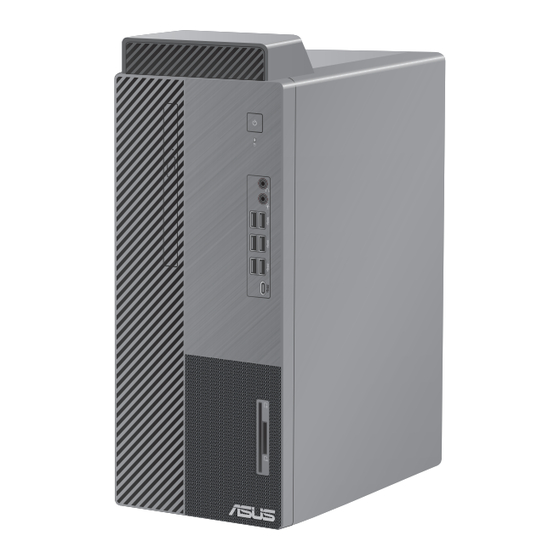
Table of Contents
Advertisement
Quick Links
Advertisement
Table of Contents

Summarization of Contents
Appendix
Windows 10 User Manual
Comprehensive guide for using the Windows 10 operating system on the ASUS PC.
ASUS Contact Information and Support
Contact details and support resources for obtaining technical assistance from ASUS.
Chapter 1: Getting Started
Welcome and Computer Overview
Welcome message, introduction to the PC, and overview of its components and features.
Hardware Panel Descriptions
Detailed description of front and rear panel ports, connectors, and indicators.
System Setup and Power On Procedures
Guides on connecting external devices, displays, and powering on the computer.
Chapter 2: Connecting Devices to Your Computer
Connecting USB Storage Devices
Instructions for connecting USB storage devices to the computer's ports for data access.
Audio Connections and Output Settings
Guides for connecting microphones, speakers, and managing audio output configurations.
Chapter 3: Using Your Computer
Ergonomics and Proper Posture
Tips for maintaining good posture while using the desktop PC to prevent physical strain.
Using Memory Card and Optical Drives
Instructions for using the built-in memory card reader and optical drive for media access.
BIOS Configuration for USB and HDD Security
Steps to configure USB ports and HDD security settings via the BIOS utility for enhanced control.
Chapter 4: Connecting to the Internet
Wired Internet Connections
Guides for establishing wired internet connections via DSL/cable modems and local area networks.
Network IP Configuration
Steps for configuring dynamic IP/PPPoE and static IP network settings for internet access.
Chapter 5: Using ASUS Business Manager
Installing ASUS Business Manager
Instructions for installing the ASUS Business Manager software from the support DVD.
ASUS Business Manager Features Overview
Overview of core features for system management, updates, security, and tools.
Chapter 6: Troubleshooting
Common System Issues and Solutions
Solutions for common problems like power, hanging, network, display, audio, and system performance.
















Need help?
Do you have a question about the D500MA and is the answer not in the manual?
Questions and answers